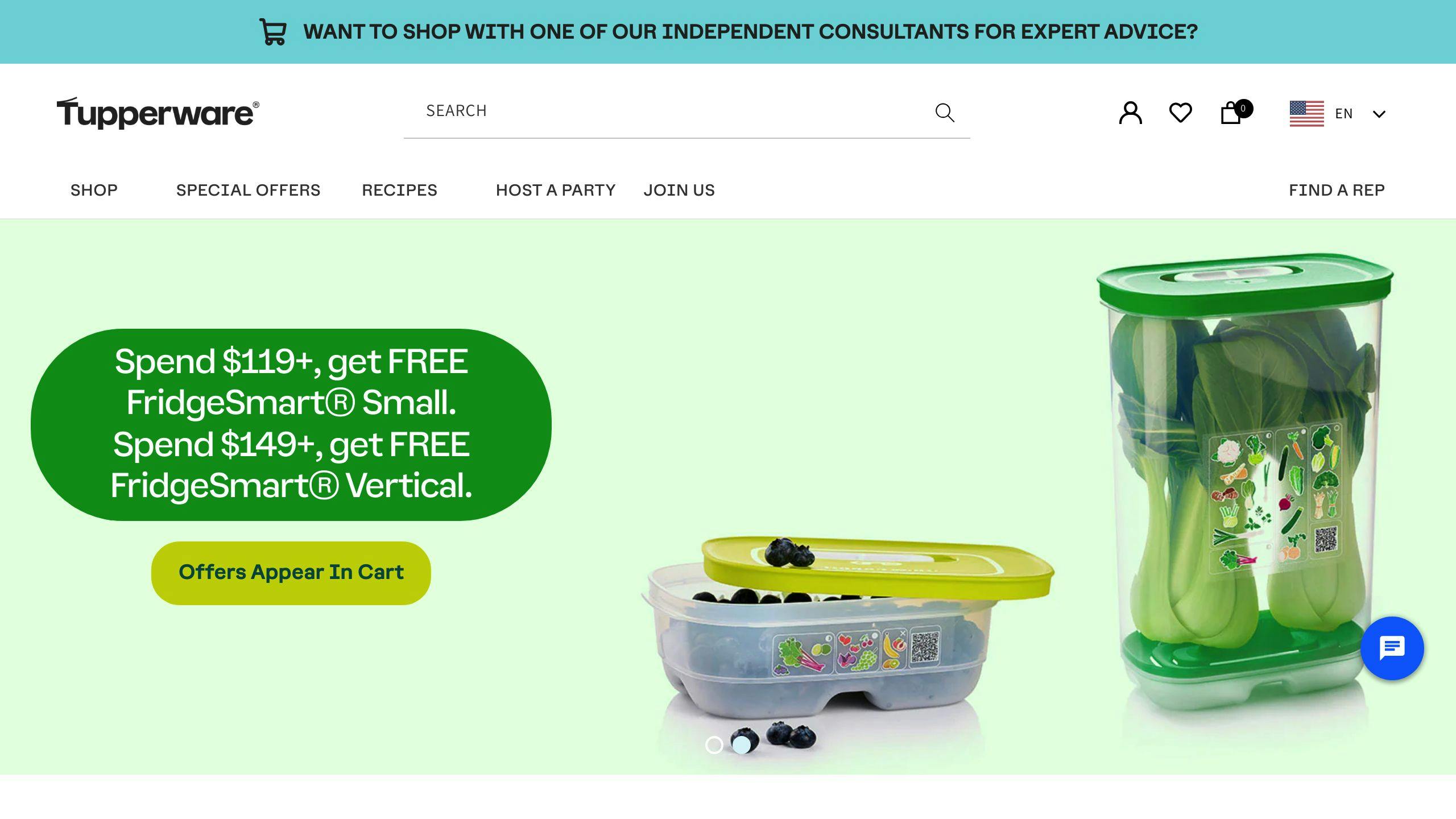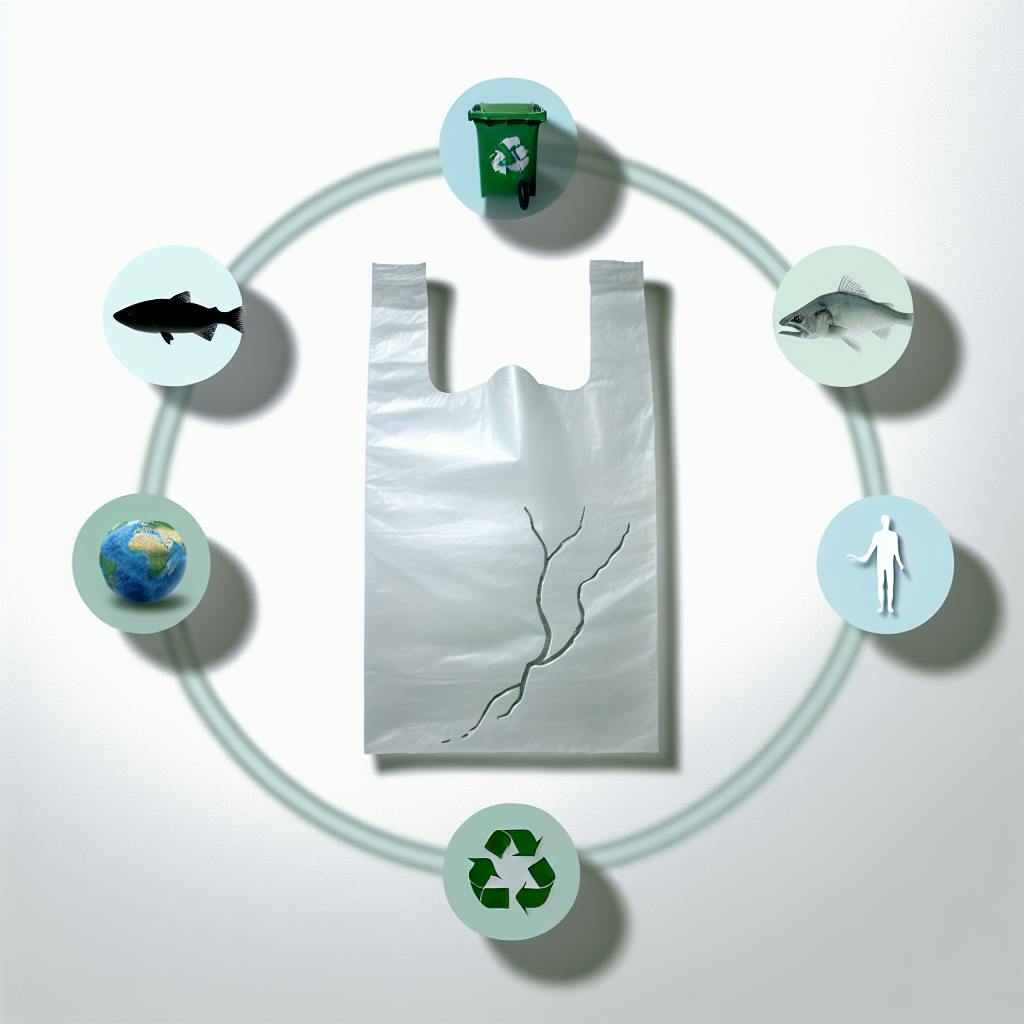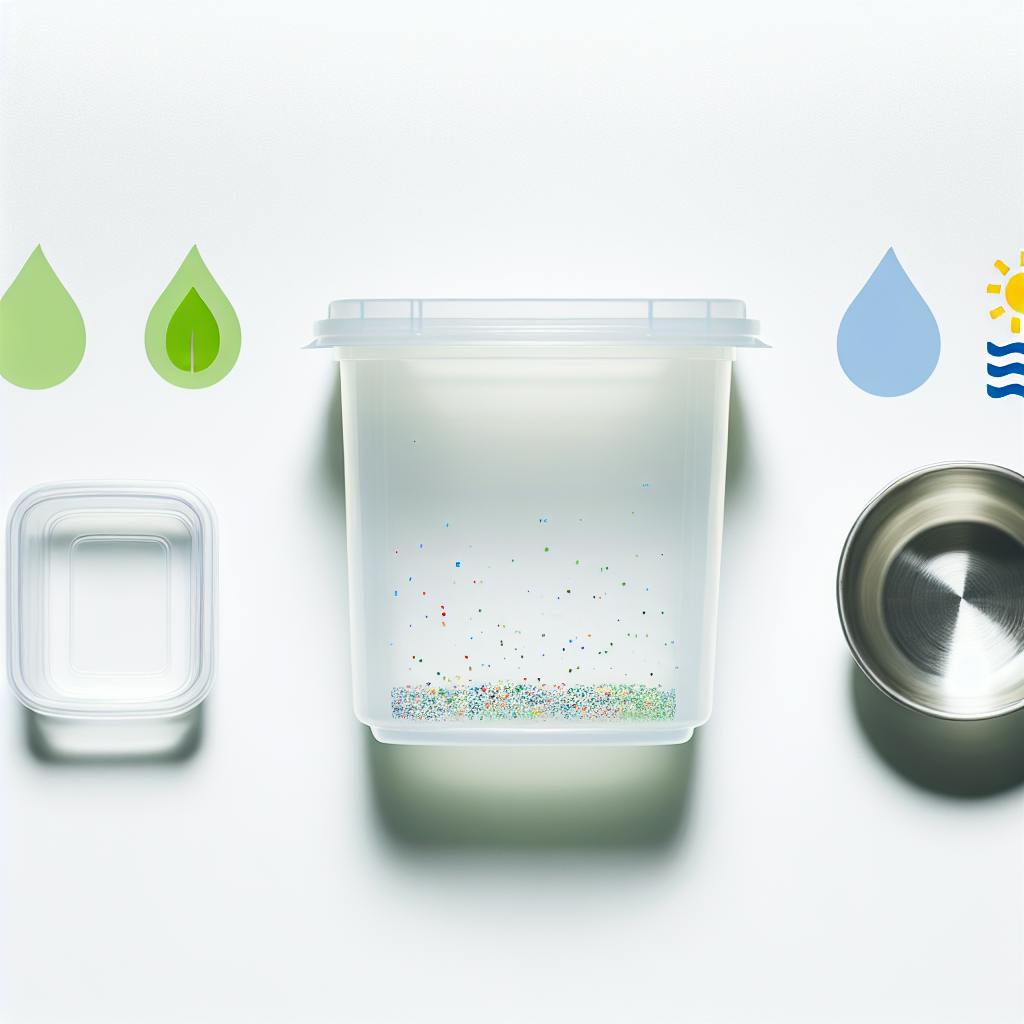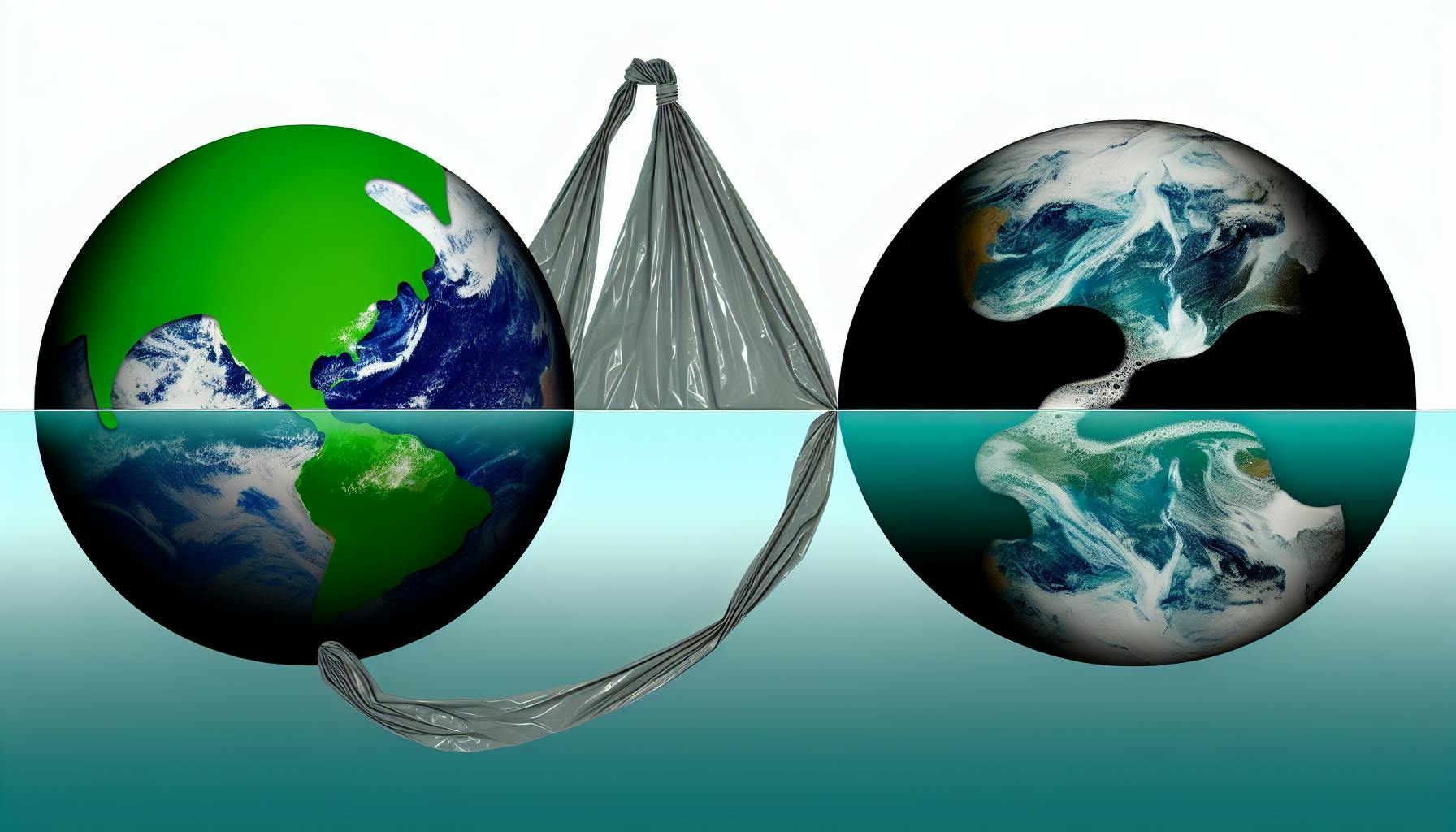Here's what you need to know about microplastics from food containers and how to reduce your exposure:
• Microplastics from Tupperware and plastic containers can harm health and the environment • Heat, wear and tear, and long-term storage cause plastic containers to release microplastics into food • We consume about 5 grams of microplastics weekly, equivalent to a credit card • Glass, stainless steel, cloth, and cardboard are safer alternatives to plastic containers • To reduce microplastic exposure:
- Avoid heating food in plastic
- Use glass or ceramic for hot foods and long-term storage
- Clean containers gently by hand
- Replace worn containers
- Buy fresh, unpackaged foods
- Use a water filter
- Eat less processed food
| Container Type | Pros | Cons |
|---|---|---|
| Glass | Microwave-safe, recyclable | Breakable, heavy |
| Stainless steel | Durable, odor-resistant | Not microwave-safe, opaque |
| Cloth/fabric | Biodegradable, reusable | Not for wet foods, needs frequent washing |
| Cardboard/paper | Compostable, lightweight | Not for wet/oily foods, single-use |
Reducing plastic use, choosing safer alternatives, and supporting stricter regulations on plastic production can help address the microplastics problem.
Related video from YouTube
The problem: Microplastics from Tupperware

How Tupperware releases microplastics
Tupperware and other plastic food containers are big sources of microplastics in our daily lives. These containers release tiny plastic bits into our food in several ways:
| How it happens | What causes it |
|---|---|
| Heat exposure | Microwaving |
| Long-term storage | Keeping food in containers for over 6 months |
| Wear and tear | Daily use, washing, cutting |
| Breaking down | Sunlight, air, certain foods |
Microwaving is the biggest culprit. It can release millions to billions of tiny plastic bits per square centimeter.
Health risks of eating microplastics
Eating microplastics from food containers might cause health problems:
-
Hormone problems: Chemicals in plastics can mess with our body's hormones. This can affect things like weight, sexual growth, and having babies.
-
Long-term health issues: Microplastics might increase the risk of:
- Being overweight
- Type 2 diabetes
- Heart disease
- Some types of cancer
-
Cell damage: In one study, tiny plastic bits killed 75% of test cells after two days.
-
Building up in the body: Scientists have found microplastics in human blood, organs, and even unborn babies.
-
Immune system effects: Microplastics in the body might cause inflammation or immune reactions.
We need more research to fully understand these risks. But it's smart to try to avoid microplastics when we can.
How big is the problem?
Let's look at how much microplastic comes from food containers and compare different types.
How much microplastic do we eat?
We eat a lot of microplastics from food containers:
| Microplastic Intake | Amount |
|---|---|
| Weekly | 5 grams (like a credit card) |
| Yearly | 52,000 particles |
| From all sources yearly | At least 74,000 particles |
| From food storage units weekly | More than 200 particles |
These numbers might be low because they don't count the tiniest plastic bits.
Different plastic containers compared
Not all plastic containers are the same:
| Container Type | Microplastic Release |
|---|---|
| Round | 12 ± 5.12 mg per pack |
| Rectangular | 38 ± 5.29 mg per pack |
| Disposable cups | 3 ± 1.13 mg per pack |
Things that affect how much plastic gets into food:
- Container shape and size
- Type of plastic
- How it's used (hot food, long storage)
- Damage from use (cutting, twisting caps)
All reusable takeout containers from restaurants let out microplastics. Hot food makes this worse.
It's not just food containers. Water bottles, cans, and even glass bottles with plastic inside can add to the problem.
This is a big issue that needs work from everyone - people who buy things, companies that make them, and people who make laws.
Solutions: Other food container options
Let's look at some choices besides plastic food containers. We'll see what's good and not so good about each one.
Glass containers
Glass containers are a good choice for storing food. Here's why:
| Good things | Not so good things |
|---|---|
| Don't add chemicals to food | Can break if dropped |
| Can go in microwave and dishwasher | Heavy to carry |
| See-through | Not great for travel |
| Can be recycled | Might not close as well as plastic |
Stainless steel containers
Stainless steel containers are tough and last a long time. Here's what to know:
| Good things | Not so good things |
|---|---|
| Very strong | Can't go in microwave |
| Don't hold smells | Can't see inside |
| Can go in dishwasher | Might react with sour foods |
| Can be recycled | Cost more at first |
Cloth and fabric options
Cloth options like beeswax wraps and cotton bags are good for the earth:
| Good things | Not so good things |
|---|---|
| Break down in nature | Not good for wet foods |
| Can be used many times | Might not close tight |
| Let air through | Need to be washed often |
| Turn into soil | Not for long-term storage |
Cardboard and paper containers
Cardboard and paper containers can be turned into compost:
| Good things | Not so good things |
|---|---|
| Break down in nature | Not good for wet or oily foods |
| Light to carry | Can't use many times |
| Don't cost much | Not very strong |
| Can be composted | Not for long-term storage |
Each type of container has its good and bad points. Think about what you need when you choose which one to use.
sbb-itb-1dc3f59
Solutions: Using plastic containers safely
Here's how to use plastic containers with less risk:
Don't heat plastic
Heating makes plastic release more chemicals into food. To stay safe:
| Do | Don't |
|---|---|
| Use glass or ceramic for hot food | Microwave in plastic |
| Let food cool before putting in plastic | Put hot food in plastic |
| Move food to a safe dish before heating | Heat food in plastic containers |
Store food for shorter times
Less time in plastic means less chance of chemicals getting into food:
| Good idea | Not so good |
|---|---|
| Use glass or metal for long storage | Keep food in plastic for a long time |
| Use plastic for short trips or storage | Store oily or sour foods in plastic |
| Keep dry foods in plastic | Store wet foods in plastic for long |
Clean and take care of containers
Good cleaning helps containers last longer and be safer:
| Do | Don't |
|---|---|
| Wash by hand with mild soap | Use strong cleaners |
| Dry well before storing | Use scratchy sponges |
| Check for marks or color changes | Keep using old, scratched containers |
| Replace worn-out containers | Put in the dishwasher |
Solutions: Use less plastic overall
Using less plastic is a big step in fighting microplastic pollution. Here are some easy ways to cut down on plastic in your daily life:
Buy fresh, unpackaged foods
Choosing fresh foods without packaging helps reduce plastic waste:
- Pick loose fruits and vegetables instead of pre-packaged ones
- Use reusable bags for produce or skip bags for tough items
- Shop at farmers' markets or local stands that don't use packages
- Choose whole foods over processed foods that often come in plastic
Buy in bulk with reusable containers
Buying in bulk with your own containers can really cut down on plastic waste:
| Good things about bulk buying | Tips for bulk buying |
|---|---|
| Less packaging waste | Bring clean, dry containers |
| Often cheaper | Write container weight on label |
| Buy only what you need | Use light bags for dry goods |
| Makes less waste | Start with a few basic items |
Many stores now have bulk sections for dry goods, spices, and even cleaning products. Bringing your own containers helps avoid single-use plastic bags.
Use non-plastic packaging
Using other materials instead of plastic can help:
1. Glass containers
- Good for storing leftovers and pantry items
- Easy to recycle and doesn't leak chemicals
2. Stainless steel
- Strong and lasts a long time
- Great for lunch boxes and water bottles
3. Cloth bags
- Good for grocery shopping and produce
- Can be washed and used for years
4. Beeswax wraps
- Natural option instead of plastic wrap
- Breaks down in nature and can be composted
Solutions: Lifestyle changes to reduce microplastics
Here are some simple steps you can take to lower your contact with microplastics:
Filter drinking water
Using a water filter at home can remove microplastics from your water:
| Filter Type | Microplastic Removal |
|---|---|
| Carbon block | 100% |
| Distillation | 100% |
Tips:
- Filtered tap water has fewer microplastics than bottled water
- Use a glass, stainless steel, or silicone bottle when out
Eat less processed food
Eating fewer processed foods can help you avoid microplastics:
| Food Type | Microplastic Level |
|---|---|
| Whole foods | Low |
| Slightly processed | Medium |
| Highly processed | High |
Choose:
- Fresh fruits and veggies
- Whole grains
- Foods with less packaging
Pick organic food and clothes
Organic products often have fewer microplastics and chemicals:
| Item | Why Choose Organic |
|---|---|
| Produce | Grown without man-made pesticides |
| Clothes | Made from natural fibers (cotton, linen, wool) |
Tips:
- Synthetic clothes (like polyester) shed tiny fibers when washed and worn
- Try thrift stores for cheaper natural fiber clothes
Bigger solutions: Policy and industry changes
To fix the microplastic problem, big changes in rules and how things are made are needed. Let's look at what's being done and what else needs to happen.
Rules on plastic production and use
Governments are making new rules to cut down on plastic pollution:
| Country/Region | Rule | What it does |
|---|---|---|
| UK | No microbeads (2018) | Less plastic in soaps and creams |
| EU | Might ban added microplastics | Could cut plastic in many products |
| Many places | No single-use plastics | Less plastic trash |
These rules help, but we need more to really fix the problem.
New packaging that's better for the earth
Companies are making new kinds of packaging that don't hurt the earth as much:
- Paper packaging: More food companies are using this
- Packaging that breaks down: New options for food containers
- Packaging you can eat: Scientists are working on this
More companies are switching from plastic to paper to be better for the earth. This is making more people work on new ways to package things.
Looking for better options than microplastics
Scientists are working hard to find ways to fix the microplastic problem:
| Research Area | What They're Working On |
|---|---|
| Nature-based filters | Using moss and mussels to clean water |
| Better clothes | Making clothes that don't shed as much plastic |
| Better recycling | Finding new ways to reuse plastic |
This work is important to help stop plastic waste and make the earth healthier. By helping these projects, we can work towards less plastic trash in the future.
Conclusion
Summary of problems and solutions
Microplastics from plastic containers can harm health and the environment. Here are the main issues and fixes:
| Problem | Solution |
|---|---|
| Chemicals from plastic | Use glass, steel, or bamboo containers |
| Throw-away plastics | Use bags and containers many times |
| Tiny plastics in food | Buy fresh food without packaging |
| Plastic trash | Recycle right and support less-plastic ideas |
What you can do
Here's how you can help cut down on tiny plastic bits:
- Use food containers not made of plastic
- Bring your own bags and containers when shopping
- Clean your drinking water
- Buy from shops that use less plastic
- Tell others about the risks of tiny plastics and how to avoid them
These small steps can make a big difference in cutting down plastic use and keeping our world cleaner.


